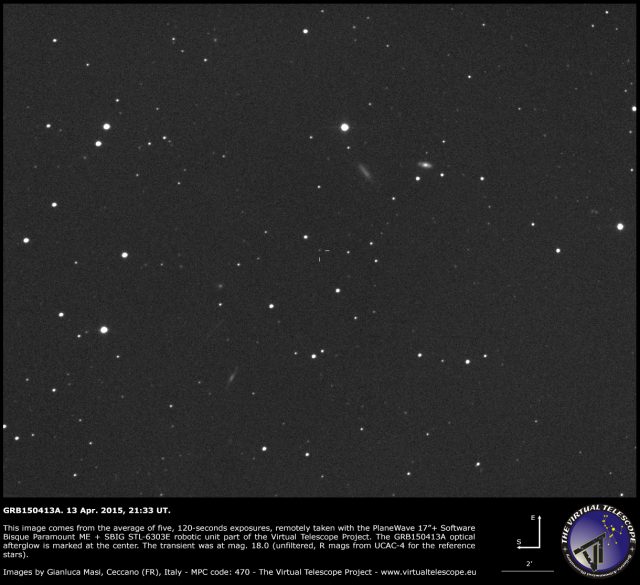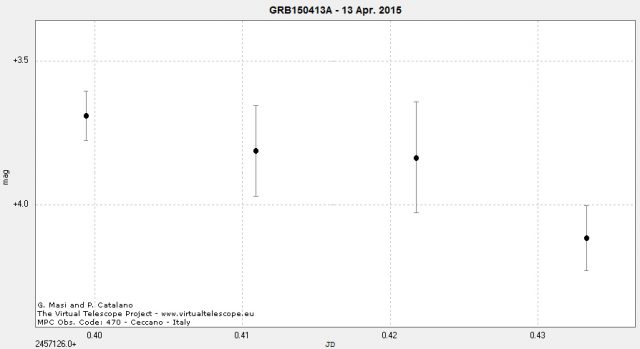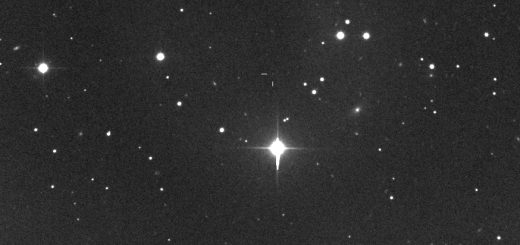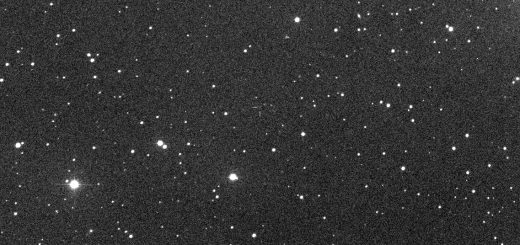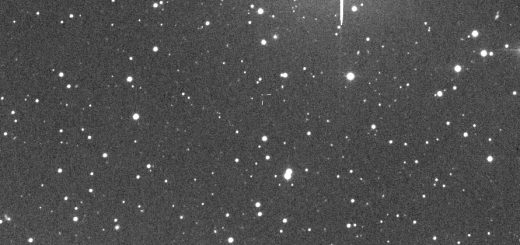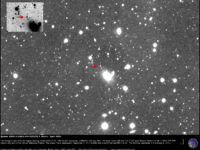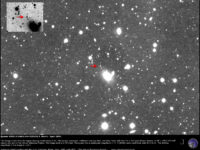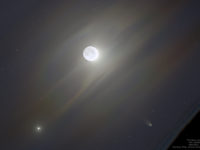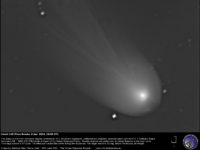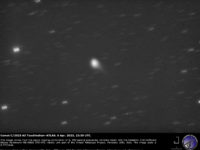GRB 150413A: detection of the optical afterglow
On 13 April 2015, at 13:54:58 UT, the Swift Burst Alert Telescope (BAT) triggered and located GRB 150413A. This detection was reported via the Nasa’s GCN 17688 Circular. 132 seconds after the burst, the MASTER II robotic telescope located in Tunka detected a bright OT (mag 16.1 unfiltered) within the Swift’s error box (GCN 17689).
At 21:25 UT, 7 hours and 30 minutes after the burst, we remotely slewed the PlaneWave 17 + Paramount ME + SBIG STL-6303E robotic unit to the transient position, starting grabbing images, with 60/120 seconds of integration. We immediately located the OT, finding it at mag 18.0 (unfiltered, using R mags from UCAC-4 for the reference stars). Our observations were promptly announced via Astronomer’s Telegram network (ATel) and Nasa’s GCN 17706 Circular
The image above comes from the average of five, 120-seconds exposures.
We managed to cover the transient for about 1 hour, detecting a slowly fading trend. The plot below shows differential photometry of the transient, making apparent the fading trend. Each doth is the average of seven, 120-seconds integration frames.
Observations at Calar Alto Observatory and Asiago Observatory suggest a redshift z=3.2.
Back to “Gamma Ray Burst” Page
Support The Virtual Telescope Project!
Support us! Please, donate and receive unique, LIMITED EDITION set of images of the stunning comet 12P/Pons-Brooks with Andromeda Galaxy, of potentially hazardous asteroids, space stations and much more, specifically made for supporters like you!
(you can adjust the amount later)

